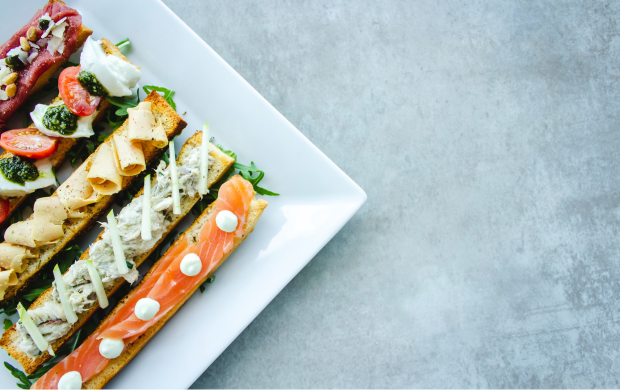Healthy eating is becoming increasingly more popular for the general public as a way to ensure healthy body weight levels and promote overall health and wellness. However, it’s not just about the ingredients but also the cooking practices and habits you employ to create your meals. For instance, fruit and veg are healthy choices, but not if you drench them in sauces or use them in recipes high in salt, sugar or fat. Eating healthier isn’t something that can happen overnight, you need to ease yourself into a new routine and gradually adopt new habits. Here are some of the ones you should be mindful of when it comes to how you cook.
Low-fat methods
Steam cooking is one of the healthiest ways to prepare food. You don’t have to use oil during the cooking process, which reduces the caloric content, but the foods also retain a more pleasant texture than when boiled. It is also very simple to avoid overcooking or burning food, which allows you to avoid all the harmful chemicals that might occur from this process, as well as food waste.
Make sure you have the proper storage available for your steaming vessels. Cupboards with shaker kitchen doors are one of the most popular options among homeowners due to their classic, timeless style. Since the design prioritises functionality and practicality, you don’t have to worry that your cabinets won’t be able to hold your appliances inside. Moreover, the style will remain timelessly fashionable, and you won’t have to worry about refurbishing your kitchen regularly to keep up with the trends.
And although it may seem like there are not many foods you can cook in this manner, the truth is that the process is incredibly versatile. You might end up discovering new dishes in this way or find ways to rework some of your favourite foods, so they’re steaming-friendly. You can get inspiration from Chinese and Japanese cuisines, which use the process quite extensively.
Steamed rice with crab and other seafood or meats are simple dishes you could try. Chawanmushi, which translates to “steamed in a tea bowl,” is a savoury egg custard dish with many ingredients such as soy sauce, mirin, shiitake mushrooms, dashi and boiled shrimp. You can also make steamed desserts, including mochi, manju, yokan and suama, as well as soups like steamed silkie soup.
One of the main advantages of steaming is that you can cook several foods at the same time without worrying that the flavours will transfer from one to the other. It is also easy to clean afterward, and you don’t have to worry about wiping and scrubbing the walls and floors to get all the splatters out. Even odours and unpleasant smells appear to be significantly reduced or even completely non-existent when you choose to steam cook.
Balanced meals
The ingredients you cook with are essential. Integrating more plants into your diet, like vegetables, fruits and legumes, is crucial for your health. Dietary fibre helps your digestive system function well, and the numerous vitamins and minerals support healthy immune function. A diet rich in fruits and vegetables is also associated with a lower incidence of conditions such as obesity, heart disease and high cholesterol levels.
You can start by making the occasional fruit smoothie, as well as integrating more salads into your daily meals. If you want, you can also opt for the heartier versions that can be complete meals, such as:
- roasted cauliflower with chickpeas, chilies and a zesty dressing
- salmon with peaches, lime, onions and parsley
- salmon with wild rice, oranges and herbs
- tofu, zucchini and cherry tomatoes
- lettuce, tomato, bacon, arugula and toasted bread
- salmon with radish, mint and rocket salad
- lamb with cauliflower, pomegranate seeds and rice
- beef with cucumber, tomatoes, chilli and fish sauce
Choosing whole grains over the ones that are highly refined ensures that you get more fibre in your diet, as well as more B vitamins, zinc and magnesium. Quinoa, brown rice and amaranth are some of the most important to add to your diet. Since they’re versatile, you can also create many meals with them. When you ensure your meals are balanced and get adequate protein, healthy fats, fibre and carbs. That’s how you know you’re supporting your well-being through food.
Portioning
Eating healthy isn’t just about what food you eat but how much of it you eat. You shouldn’t become too focused on it and resort to measuring everything, but you should still control your portion sizes. If you feel full, you don’t have to force yourself to finish everything on your plate. Put it in the fridge for later, or try cooking something new with the leftovers. This way, you’ll learn exactly how much you eat, and you’ll refrain from cooking too much or putting too much on your plate for a meal.
Moreover, you should listen to your body’s needs. If you feel like you’ve already had enough, you should stop eating, and if you still feel hungry, you should get more. Make sure you’re not eating too fast, so your body can register how much you’ve eaten. This can also help you enjoy your meals more since you focus on the food in front of you and are more likely to use all your senses to fully enjoy it.
Stay mindful
Just because you’re starting to eat healthier doesn’t mean that food should stop being enjoyable for you. Completely depriving yourself of some treats that are definitely not the healthiest option out there, such as biscuits or crisps is more likely than not to backfire and cause you to eat a lot all at once simply because you didn’t have that particular food for a long time and you’ve started developing cravings for it. It’s also unhealthy to do this from a mental and psychological perspective.
What you should do instead is to become more mindful of your food choices. For example, eating sugary desserts not just because you have them in the fridge but because you want to have some. Cooking can help here since baking a cake takes more effort than buying one from the store. Here too, be careful of the portions and don’t overdo it.
Eating healthy includes several habits you must employ in your daily routine, as well as a gradual process of being more conscious about the food you eat.








